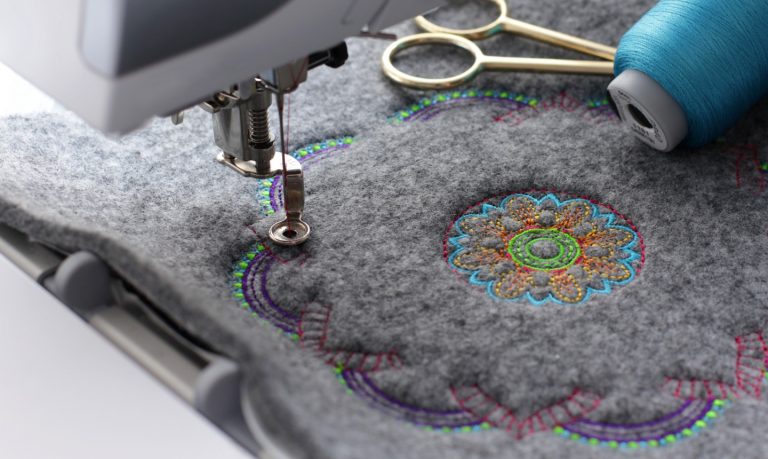Grasping the Embroidery Digitizing Refine: Your Ultimate Overview
Embroidery digitizing is a thorough craft that needs accuracy and know-how to equate intricate styles right into digital styles for machine needlework. As craftsmens get started on this journey to understand the embroidery digitizing process, a thorough understanding of the fundamentals sets the structure for excellence. Past the rudimentary knowledge lies a realm of advanced software application, specialized devices, and nuanced strategies waiting to be discovered. By diving into the nuances of digitizing, one can unlock a world of creative possibilities and elevate their embroidery projects to new heights.

Recognizing Embroidery Digitizing Essentials
Needlework digitizing basics form the structure whereupon elaborate designs are equated into machine-readable styles for accurate stitching. This initial action in the embroidery digitizing procedure is crucial for guaranteeing that the final embroidered item is a loyal depiction of the initial layout. Recognizing needlework digitizing essentials entails grasping key concepts such as stitch kinds, stitch direction, density, underlay, and draw settlement.
Sew kinds play a crucial duty in identifying the visual and textural outcome of the stitched style. By choosing the appropriate stitch kind, whether it be satin, fill, or running stitch, digitizers can attain the preferred effect and boost the general quality of the needlework. Furthermore, stitch instructions influences the flow and measurement of the style, while density determines the spacing and coverage of the stitches.
Furthermore, underlay sewing gives stability to the style by securing the material and preventing distortion throughout the embroidery procedure. Pull compensation is one more vital consideration to neutralize the natural propensity of fabric to agreement when stitched. Understanding these embroidery digitizing fundamentals is fundamental for developing professional-quality embroidered items.
Selecting the Right Digitizing Software
Choosing the proper digitizing software is an essential decision that substantially influences the efficiency and top quality of the embroidery digitizing procedure. Digitizing for Embroidery. When picking the right digitizing software application, it is vital to take into consideration factors such as the intricacy of designs you plan to produce, the user-friendliness of the software program, the level of consumer assistance used, and the compatibility with your needlework device
There are numerous digitizing software application options offered out there, ranging from standard programs for beginners to sophisticated software program for professional digitizers. Some popular selections consist of Wilcom EmbroideryStudio, Hatch Embroidery Software, and PulseID. These software provide a variety of devices and functions click this to aid you produce elaborate styles easily.
Prior to making a decision, it is recommended to explore the different software application choices with complimentary tests or trials to determine which one finest fits your requirements. Furthermore, reviewing testimonials and looking for referrals from experienced digitizers can provide beneficial understandings into the toughness and weaknesses of each software (Digitizing for Embroidery). By very carefully evaluating your needs and contrasting the features of different digitizing software, you can make an informed selection that boosts your embroidery digitizing workflow
Digitizing Tools and Techniques

Optimizing Layout Settings for Needlework
Mastering the complexities of Related Site layout settings is basic in accomplishing ideal cause the embroidery digitizing procedure, structure upon the foundation laid by comprehending digitizing devices and techniques. When optimizing design settings for needlework, it is crucial to think about elements such as stitch kind, density, padding, draw compensation, and enrollment. Sew kind choice affects the general feel and look of the layout, with alternatives like satin, fill, and running stitches offering different textures and results. Thickness refers to the spacing and thickness of stitches, influencing the design's insurance coverage and durability. Appropriate rug stitching supplies stability and stops fabric distortion, particularly for complex designs or on elastic products. Draw settlement adjusts for material stretch throughout stitching, making sure precise style duplication. Registration settings straighten different components of the style precisely, preserving total style stability. By fine-tuning these design settings, embroiderers can enhance the quality and accuracy of their stitched developments.

Troubleshooting Common Digitizing Issues
When coming across common digitizing problems throughout the embroidery procedure, it is necessary to recognize the source and apply efficient options promptly. One typical problem is stitch thickness problems, where stitches might be too dense, creating the material to pucker, or as well thin, leading to voids in the layout. Readjusting the stitch thickness visit here setups in the digitizing software application can aid solve this problem.
Another constant difficulty is string breaks throughout the needlework process. This can take place because of numerous factors such as incorrect stress settings, boring needles, or using low-grade string. Making certain correct upkeep of the needlework maker, consisting of routine needle changes and tension changes, can decrease the event of string breaks.
Moreover, design registration errors can result in misaligned elements within the embroidery design. Checking the design alignment in the digitizing software and making necessary adjustments before stitching can aid in preventing this concern. By resolving these usual digitizing problems quickly and effectively, you can make sure a smoother embroidery process and top notch ended up products.
Verdict
In verdict, mastering the needlework digitizing procedure calls for a strong understanding of the fundamentals, the ideal choice of software program, and expertise of devices and techniques. Optimizing style settings and troubleshooting common digitizing concerns are critical actions in making sure premium embroidery outcomes. By complying with these steps diligently, one can attain precision and efficiency in the digitizing procedure.